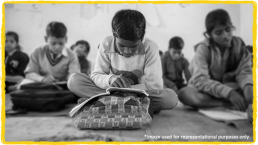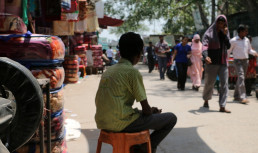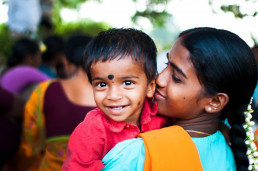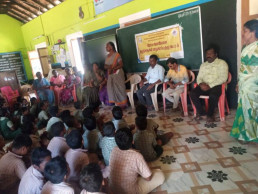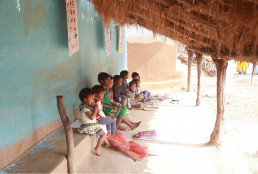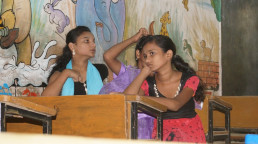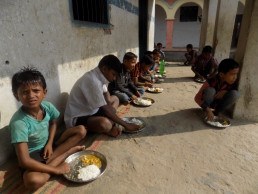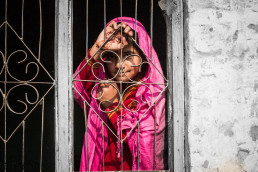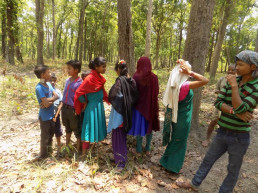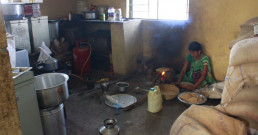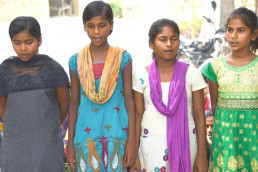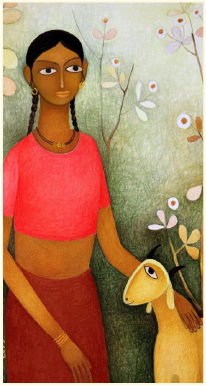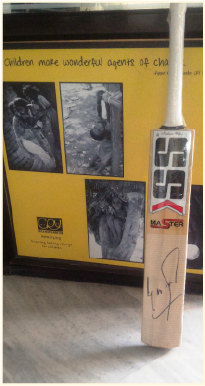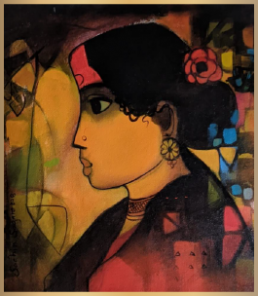16-year-old Raju Kumar should have been poring over his schoolbooks. Instead, he was nearly a thousand miles from his home in rural Bihar, cutting diamonds in a dismal, unventilated factory in Surat, Gujarat state.
He hadn’t wanted to leave school – things had been looking up. Despite a staggeringly high dropout rate among his peers, he’d made it to the 10th grade, and had passed his crucial board exam. But then, economic calamity struck his family. His parents, landless day laborers themselves, found themselves facing destitution.
So, with a few friends, Raju set off on the journey to the state of Gujarat in western India, where 95% of the world’s diamonds are cut. Underage workers are among those doing the cutting, as some factory owners, enticed by easily exploitable, cheap labor, routinely flout child labor laws. Though the stones that Raju ground and polished day in and out for a meager wage might have been priceless, their value paled against that of his health, as well as his fast-slipping opportunity to live a better life.
Aside from being illegal, Raju’s work was hazardous: unskilled workers were left to use dangerous, powered cutting tools and faced respiratory exposure to “black diamond dust” thrown off by the process. It took only three months at the factory for Raju’s job to begin taking its toll on his young body. The repetitive labor, the cramped and unsanitary living conditions, and the constant inhalation of the black dust kept him chronically ill. He alerted his parents to his condition, but if his monthly salary of $107 USD suddenly halted, it would spell disaster for the family.
Raju’s story is all too common among children from Bihar state’s West Champaran district, located among the forests and hills near India’s border with Nepal. Most of the people here belong to the indigenous Tharu and Oraon tribes, communities that face both poverty and discrimination. Due to a variety of factors, public amenities for children are non-functional: schools are poorly staffed and lack textbooks, safe drinking water, and separate toilets for girls. The Integrated Child Development Services (ICDS) centers – which are supposed to provide early-childhood health and nutrition services for infants and children up to age 6 and new mothers – are similarly hobbled by poor infrastructure and low staff accountability. Discouraged by the lack of resources and learning opportunities, children often lose interest in studies and drop out of school in favor of work. Pursuit of more lucrative earnings frequently leads children – mostly boys – to migrate to other states as early as age 13. Across India, the problem is endemic. According to India’s 2011 census, there are 33 million children between the ages of 5 and 18 are engaged in labor. A detailed policy brief by our partner Child Rights and You in India notes that the ongoing COVID-19 pandemic threatens to push even more into the work force.
CRY America’s project partner DEEP (Development Education and Environmental Programme) has been working on child protection and education issues in 24 villages in West Champaran. The causes of child labor are complex and cross-cutting; DEEP recognized that such a multi-layered problem requires a multi-layered intervention.
Children’s collective participation in their own development is a key theme in CRY America’s rights-based approach. To that end, the DEEP team helped to organize children’s collectives, which met regularly to discuss issues such as child labor and to identify and report child labor cases. Concurrently, DEEP coordinated anti-child labor workshops with village-level government officials, landowners, and small businesses. The participants designed and implemented use of a “Child Labor Free” sign, to be posted at establishments committed to the cause. DEEP also targeted household resource scarcity as a major root cause of child labor, by linking families in need to various social entitlement programs that provide guaranteed, paid work and regular food allotments.
Freshly empowered with awareness of their rights, the children’s collectives were instrumental in identifying 363 boys and girls who were working locally as stone-crushers, field hands, and in shops. Through a series of persuasive discussions with parents, officials and employers, the DEEP team and the collectives were able to remove all of the children from the workforce and place them back into school.
Help for Raju was not far behind. DEEP launched a campaign directed at migrant child laborers, using rallies, street dramas acted out by children’s collective members, and meetings to raise awareness among parents of the ills of the practice. Raju’s parents came to understand that the lasting damage to their son’s well-being far outweighed his earnings.
Following a series of counseling sessions between Raju, his parents, and DEEP staff, Raju left his job and returned home. DEEP assisted him in re-enrolling in high school and provided him with free computer training at its Digital Literacy Center. He has since graduated and is well on his way to achieving his goal of becoming a government officer. In the meantime, he has become a valued volunteer trainer at the Digital Literacy Center, helping teach basic computer skills to other at-risk children.
“Child labor actually perpetuates poverty and unemployment,” says CRY America President Shefali Sunderlal. “Besides getting negligible wages, children’s rights are violated and their dreams shattered. Children who survive the harsh working conditions grow up to become unskilled, uneducated, unhealthy adults. We can break this harmful cycle of unemployed parents and working children by ensuring that all children go to – and stay in – school.”
CRY America’s experience confirms that parents in villages like Raju’s across India do value education and will do their best to ensure their children go to school. Through our project partners, CRY America has been working to eliminate obstacles to education, like lack of livelihood opportunities for parents and poorly resourced schools. The change is brought about through focused work with all of the stakeholders: teachers and schools, the children, their parents, the local community and local government agencies.
While barriers like child labor, girl child discrimination, migration, and displacement are being addressed, programs like evening classes and bridge education sessions prepare children for eventual mainstreaming into public school.
Often, this is an incremental process that takes time. But once a community is empowered with the awareness of their rights and the mechanisms by which to secure them, the change becomes self-sustaining. And we’ve seen great success from DEEP’s effort: thus far, they have ensured that 6,420 children go to school, 358 children have been removed from labor, 14 child marriages were stopped, and 480 children are part of the children’s collectives. Today, eight villages and slums are child-labor free.
Recommended for you












